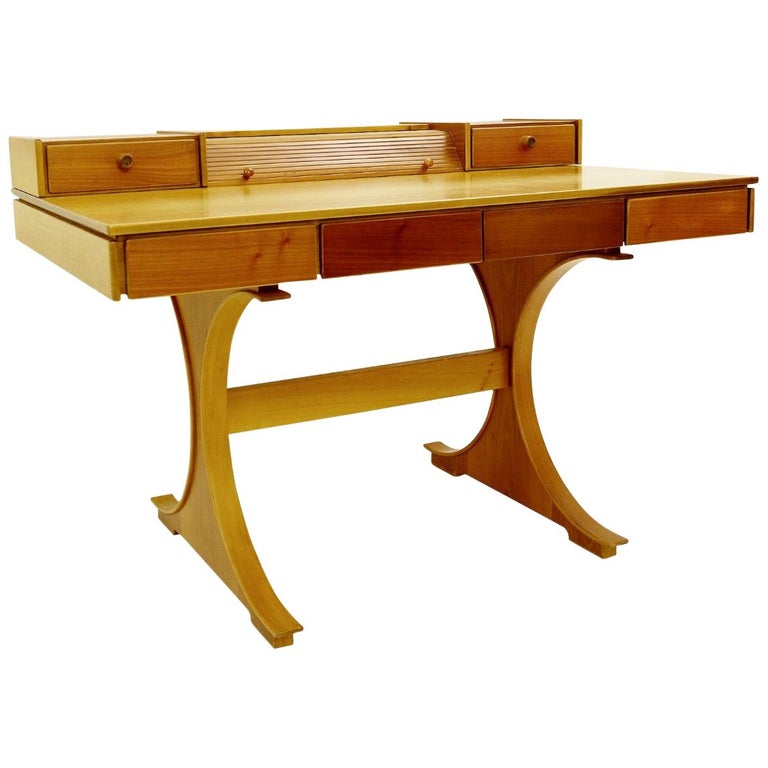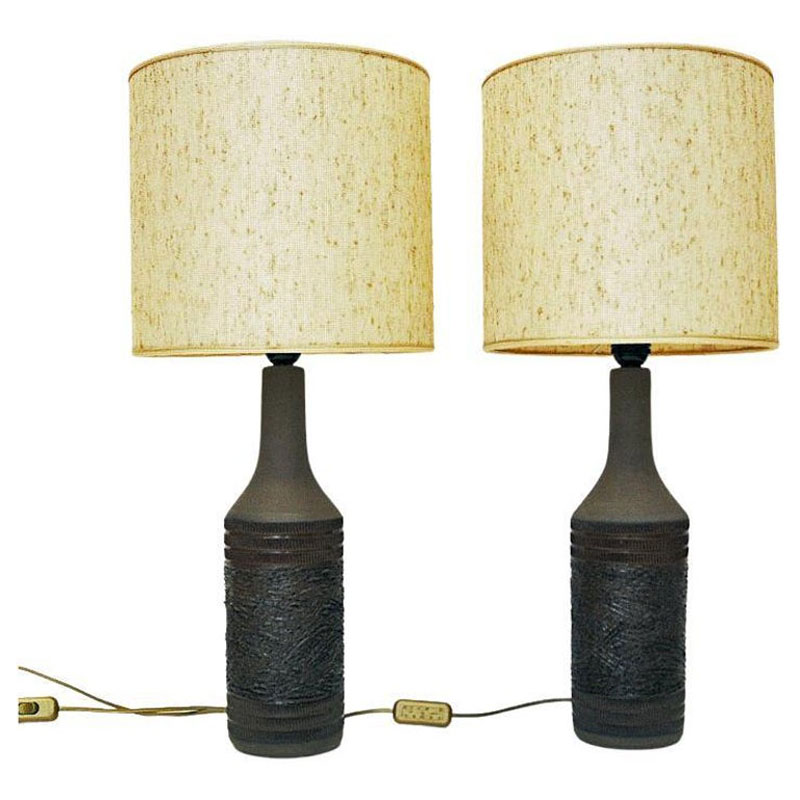I found what certainly appears to be a Hans Wegner papa bear chair and ottoman, at an estate sale of a judge-advocate in the U.S. Air Force who was in Denmark in the early 60s and obtained this chair there and had it shipped to the U.S. upon return. The chair has been reupholstered and perhaps the A.P. Stolen stamp is covered up, or maybe there isn't one. The chair and the ottoman as well have the round metal label mentioned in the title above. The chair also has a very shiny label that carries the following:
ORIGINAL MODERN DANISH FURNITURE
[logo of interlocking p and d] supplied by POVL DINESEN
CABINETMAKER
7. Madvige Alle Copenhagen Denmark
From what I have read and seen, it would appear that this is a bona fide Hans Wegner chair and ottoman, and the this member of the U.S. military obtained it in Denmark, where Povl Dinesen was the distributor.
It also has an old label from Allied Van Lines that is faded. The straps and the wood frame and everything about it says authentic vintage chair. The seat pad is of the thinner variety I have seen on some of the papa bear chairs, although most have the puffier one.
So, my question is, does this all sound reasonable and authentic to anyone who knows more about this than I do, which should be a lot of you - I am relatively new to this.

All of that sounds exactly right. The AP stolen ink stamp will be beside the Danish Furniture Control medallion, but it may be extremely faint, or even completely gone. Ink stamps are not light fast.
It sounds promising that the cushion is on the thin side, as that sounds accurate. Very often the Papa Bear gets over stuffed and upholstered all wrong. It is supposed to have svelte lines. And it is not an easy chair to upholster. (I have personally upholstered it).
Mr. Ericson: I am delighted that you saw this and responded. I have gone through all the threads for "Papa Bear" (I just registered on this site yesterday) and found many of your informative observations. You are a generous individual with encyclopedic knowledge.
Since I posted my question, the estate sale organizer called me by accident and since I had her on the phone she told me that the owner's name is Sydney Cooperberg, and that he was stationed in Denmark for 20 years in the U.S. Air Force and bought the chair and ottoman there, as she put it, "from the factory." He has no paperwork. I have to presume that it was a Povl Dinesen showroom, maybe, or perhaps the servicemen knew to go directly to where the chairs were made, I don't know. I have asked her to have the former owner call me - he is 88-years-old and somewhat frail and that is why he moved (it was a moving sale, not actually an "estate" sale). She thinks he would be thrilled to talk about it. The Povl Dinesen label on this looks identical to a couple of other photos I located of it - very shiny - looks like metal but is very thin and flimsy - I didn't want to disturb it any more than just barely touching the edge.
I checked all the little tidbits of information in the numerous threads and everything seemed to support that this is authentic - the overall dimensions, where the seams are (including on the cushion - one seam only around the mid-perimeter, with no folds or other dart seams - I sympathize with you having to re-do one - sounds very tricky. All of the red flags that would point to a knockoff are absent (including the observations in the Lauritz.com article that used this chair as an example of how hard it can be to tell the difference between an original and a later knockoff or otherwise similar work), plus the backstory is very compelling.
The re-upholstery work on this I think was done pretty well, but I also suspect you would not be terribly pleased with the unseen portions - on the bottom, underneath the seat the cut edge of the fabric is wavy, and it's held in place with staples, not upholstery tacks or nails (I don't know the preferred term in this setting).
Heck, what do I know? Maybe staples are better in this situation.
However, right around the hand rests it is very tight and exact, and the piping at the front edge of the handrest seems perfect to me. They definitely did not overstuff it.
I also want to echo something I think you offered, that the cantilevered arms allow for a lot of different positions when sitting. That is definitely true - I discovered that when I sat in the chair for the first extended period of time. It is large enough to allow moving about a lot and being comfortable in a variety of positions.
I have to ask: Where are you located? If I ever was thinking about having this reupholstered, perhaps you could do it.
Once when I was considering buying one of these chairs online and then having it immediately redone by a well-known firm on Long Island, NY, near the auction house (they were going to go see it before purchase to verify that it was authentic and determine if a restoration was worthwhile), their estimate to have it fully restored, including the wood and reupholstered in leather, was $4,100, I think.
I know that this part of the website is not for doing deals, but you might give me your contact information, if you choose to. Whatever - I am new to this site, but I feel very confident that you are a bona fide individual with serious knowledge of this particular work of Wegner's.
Regards, Gary
Povl Dinesen was a cabinetmaker in the beginning. He participated in the annual cabinetmaker exhibitions. Erik Buck's model 50 dining chair was actually first made by Povl Dinesen and shown at the exhibition that year. I think Povl was a smart business man, and saw that the cabinetmaker's business model was doomed. So he added a retail side to his business and started selling all the factory pieces from other factories, and adding a few from his own shop into the mix. He primarily sold to US servicemen by offering a catalog in English and other such details to make an English speaker comfortable spending large amounts of cash.
Your chair would have been bought from one of his stores. This is how it came to have a Povl Dinesen stamp on it.
You have only provided the one photo of the medallion, so I can't opine on much, but even that offers a detail that says it is authentic: A. P. Stolen put the DFC medallions on with nails, often times just one, and in exactly the place yours was nailed on.
Also, note that not all A. P. Stolen pieces seem to have been marked.
I am in New Mexico, USA. You can contact me via here: http://movablemodern.com/contact
Eric:
I am very glad I ran across you. I definitely feel like I owe you. I don't know why you spend so much time helping out strangers online, but it is remarkable.
I tried to attach additional photos, just FYI, but maybe I'm not doing it right or they are too large, or whatever.
I don't want to take unreasonable advantage of your generosity of time and expertise.
I will e-mail you at your website with a suggestion.
Regards,
Gary


I have learned an immese amount from helping people on this forum. And I like learning things.
That Papa Bear looks perfectly right. Are you sure it has been re-upholstered? I see no evidence in the photos that would make me certain it has been re-upholstered. I would guess it is a bit later than mine, from when A.P. stolen started using staples. (Mine is from about 1959 by my father's recollection, and the DFC medallion means it can't be earlier than 1958 which fits with that information.)
If you need any help, please contact us at – info@designaddict.com









